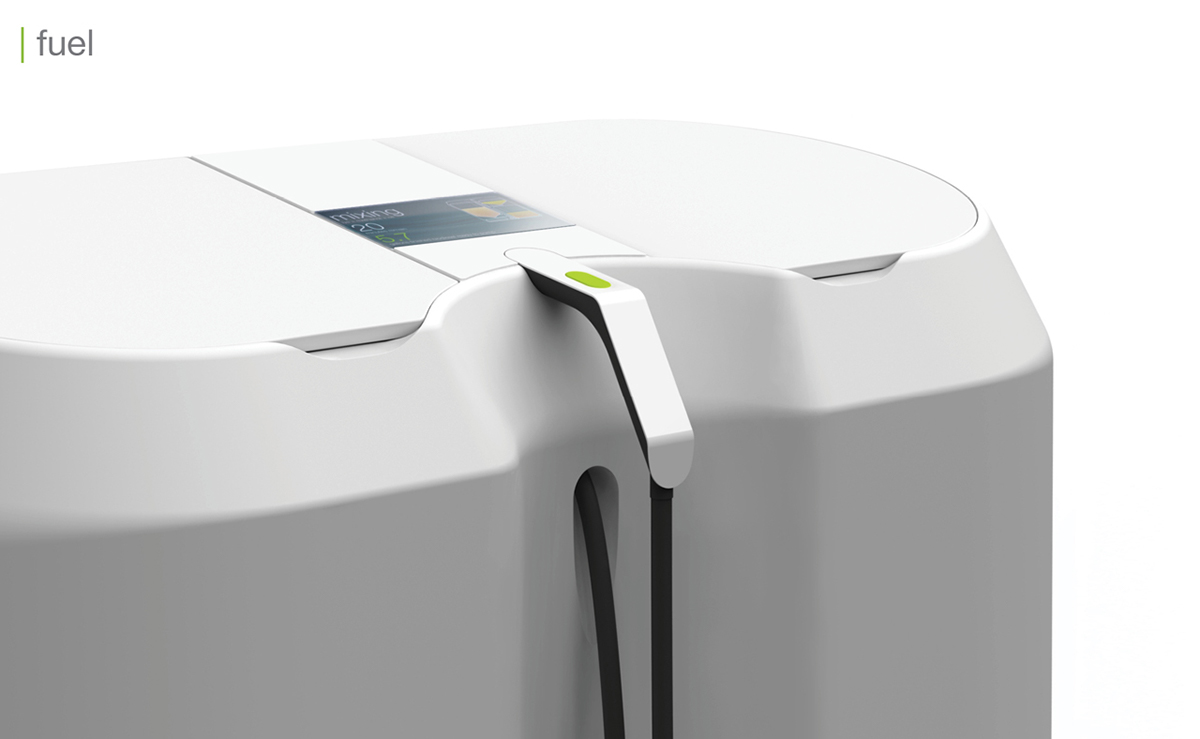fuel
environmental design | spring 2008
environmental design | spring 2008


Biodiesel processors currently on the market are overpriced, have poor quality control, and designed with no regard for usability or aesthetics.

There are various sources online offering DIY instructions for biodiesel processors, but these hacked-together designs are inefficient, dangerous, and usually end up resembling Chernobyl in one way or another.

A home biodiesel processor needs to be intuitive, and as self-sufficient as possible. Its form should be minimal and space-efficient, as well as attractive; something the user would be glad to place in their home. These are some of my sketches from this exploration phase.

Components are consolidated and re-organized in a space-efficient, intuitive manner. Like doing laundry, the user simply pours the ingredients in the top and hits go. Automated pumps, heating elements, and thermostats take care of the rest. A display informs the user of the current status of their biodiesel, and whether any ingredients are running low or need refilling. The processor requires only an electrical source and water line to operate.

A polyethylene shell provides the main structure, while also protecting and insulating all the internal components. Roto-molding foam-layered PE provides optimum structural stiffness and thermal insulation while reducing tooling costs and material waste. The Mixing tanks, pumps, piping, and heating element fill the shell interior. A pull out tank collects the glycerine by-product, which may be easily transported and disposed of, or used for making soap.

at home in the garage

close up view






